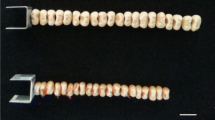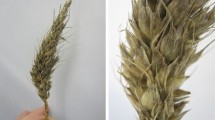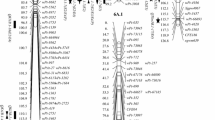Abstract
Milling yield, or the grain weight from which 100 kg of rolled groats is obtained upon milling, is an important quality characteristic of cultivated oat (Avena sativa L.). Kernel morphology and the groat (caryopsis) percentage of the whole kernel including hull are factors that influence milling yield. We mapped QTLs for kernel area, kernel length, kernel width, and groat percentage in two populations of 137 recombinant inbred lines by RFLP and AFLP analysis to evaluate the prospects of marker-assisted selection (MAS). Phenotypic correlations between kernel morphology traits and groat percentage were not significant. For kernel morphology traits and groat percentage, one to five QTLs were detected, explaining 7.0–60.7% of the total phenotypic variance depending on the trait. One QTL for kernel length in each population and one QTL for kernel width in one population were found at the same location as a QTL for groat percentage, indicating that a change in kernel size or shape could have an influence on groat percentage. The positions and effects of QTLs for kernel morphology and groat percentage were compared to QTLs detected previously for chemical grain composition (oil andβ-glucanconcentration) and agronomic traits to evaluate the selection response on these traits through MAS. Several regions of the oat genome were identified that contained clusters of QTLs influencing two or more traits. While the allele from one parent at a QTL could simultaneously improve two or more traits in one population, it could have opposite effects on the same traits at another QTL or in the other population. Associations among traits were complex and will require careful consideration when employing QTL-marker associations in MAS to avoid negative selection response. Future research to discover candidate genes for those QTL clusters could provide information about trait associations and help in designing selection programs.
Similar content being viewed by others
Author information
Authors and Affiliations
Additional information
Received: 17 February 2000 / Accepted: 27 October 2000
Rights and permissions
About this article
Cite this article
Groh, S., Kianian, S., Phillips, R. et al. Analysis of factors influencing milling yield and their association to other traits by QTL analysis in two hexaploid oat populations. Theor Appl Genet 103, 9–18 (2001). https://doi.org/10.1007/s001220100579
Issue Date:
DOI: https://doi.org/10.1007/s001220100579




